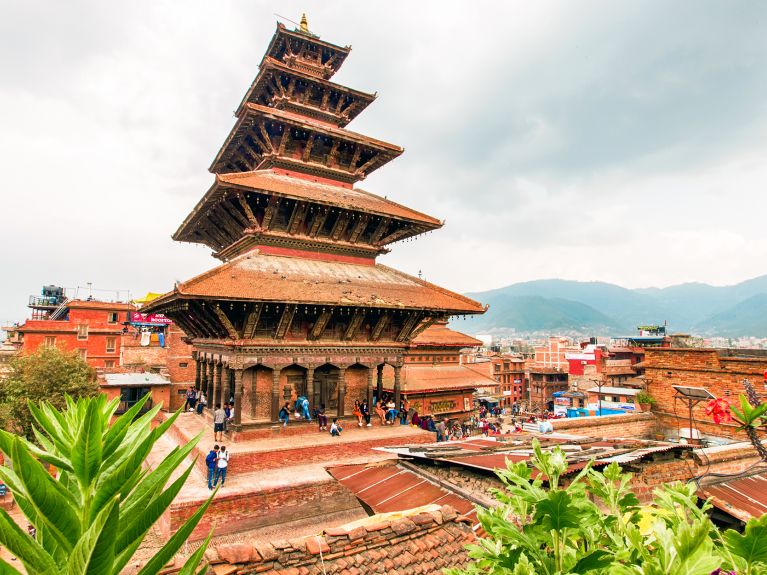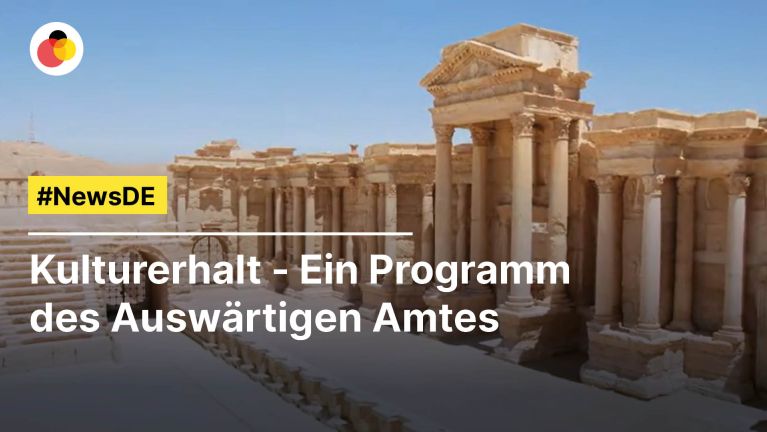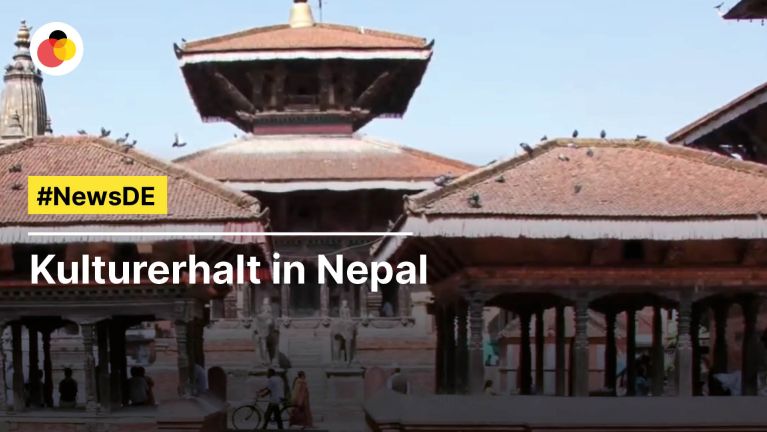Preserving cultural treasures in Asia
Manuscripts, apsaras and a colourful gateway in Hué – how Germany is working to preserve unique cultural treasures in Asia.

“This,” says conservator Rabindra Puri, “is the only notice board in the whole of Nepal that is written in German.” He points to a stone stele next to the Chyasilin Mandap pavilion in the heart of the ancient royal city of Bhaktapur. On it is written how the then Federal Chancellor Helmut Kohl promised in 1987 to rebuild the pavilion that was destroyed in a terrible earthquake in 1934 as a “gift of state from the Federal Republic of Germany”. To this day, the pavilion stands out as a gem in Durbar Square, the historic main square of Bhaktapur in the Kathmandu Valley in Nepal.

Germany promotes cultural preservation around the world. The Federal Foreign Office in Berlin has been in charge of the programme for more than 40 years, running some 3,000 individual projects in 146 countries. Around 700 of them are in Asia alone – and at first glance, the list reads like a wish list for a dream holiday: it includes Laos and Cambodia, as well as Vietnam and Bhutan. On closer inspection it can be seen to include areas where natural disasters or conflicts could potentially threaten the cultural treasures and destroy them forever.
The funds of more than 80 million euros have been distributed as widely as possible to date. As stated in the Federal Foreign Office’s funding guidelines: “Most of the projects funded are small and manageable in terms of scale and time. The total budget of the cultural preservation programme is to be used worldwide and not concentrated in a few countries”. One particularly important point is coordination with global organisations such as UNESCO – the United Nations Educational, Scientific, Cultural and Communication Organization.
Further training for restorers in Vietnam
Since 2021, the Phung Tien Temple in the Vietnamese imperial city of Hué has been one of the cultural assets being restored with German funding. One result of the cooperation with Vietnamese experts now appears in full splendour in orange and red: restorers who underwent training up until 2018 have restored one of the portals in the 200-year-old complex. This is because the approach of the cultural preservation programme goes far beyond saving monuments: it also aims to develop and deepen practical and theoretical expertise among various actors involved in building preservation, as in Hué. The restoration of the temple is a pilot project to establish state-recognised further training for restorers in Vietnam.
The hot and humid climate, past armed conflict and neglected maintenance are taking their toll on Vietnam’s unique buildings.
The country is one of the European Union’s closest partners in Asia. Vietnam is truly “buzzing”: the economy is growing, and there are more than 500 German companies here. But Vietnam offers much more than just an interesting investment location in Asia: it has a cultural heritage dating back thousands of years. However: “Works of art have a hard time in Vietnam. The warm, humid climate, past armed conflict and decades of neglected and deferred maintenance are taking their toll on the unique buildings,” warn the experts at the Federal Foreign Office. And they help wherever they can.

Germany is also involved in the Kingdom of Bhutan, too – where the state’s achievements are also measured in terms of the happiness of its citizens: although official diplomatic relations have only existed since the end of 2020, Berlin has been supporting cultural preservation at the foot of the Himalayas ever since the 1990s. As part of a three-pronged effort in collaboration with the National Library, which still exhibits the country’s first ever typewriters, and the German-Bhutan Himalayan Society, the aim is to preserve the traditional writing culture of the country, which has a population of only 780,000. The opening of the museum, three new books and a video documentary on the printing tradition were celebrated at the end of June 2021 in the presence of Buddhist leader Tsugla Lopon Rinpoche.
Dieses YouTube-Video kann in einem neuen Tab abgespielt werden
YouTube öffnenThird party content
We use YouTube to embed content that may collect data about your activity. Please review the details and accept the service to see this content.
Open consent formThe work of the Cultural Preservation Programme is especially urgent where cultural assets need to be rescued: this includes temple complexes in Ayutthaya, Thailand, after the floods of 2011, and others in Nepal, which was hit by earthquakes. After the devastating earthquake in 2015, the Federal Foreign Office and the Gerda Henkel Foundation joined forces to take emergency cultural preservation measures in the Buddhist-dominated cultural landscape of the Mustang region. Under the direction of Professor Susanne von der Heide, cultural studies scholar and conservator, the palace of Lo Manthang and the temple of Tashi Choeling in Ghelling are being restored here: these have not only been hit by earthquakes but also by the effects of climate change.
Dieses YouTube-Video kann in einem neuen Tab abgespielt werden
YouTube öffnenThird party content
We use YouTube to embed content that may collect data about your activity. Please review the details and accept the service to see this content.
Open consent formPerhaps the most famous project in Asia, however, is the restoration of the 900-year-old sandstone reliefs on the walls of the huge temple complex of Angkor Wat, a project that has now been in progress for a quarter of a century. Here, experts from Cologne University of Applied Sciences, with financial support from the Federal Foreign Office, are involved in painstaking work to help preserve the sandstone reliefs dating back to the 12th century and protect them from the steadily advancing decay caused by moisture. One particularly interesting feature here is that the German Apsara Conservation Project (GACP) is multidisciplinary, with each step being extensively mapped, photographed and documented.




